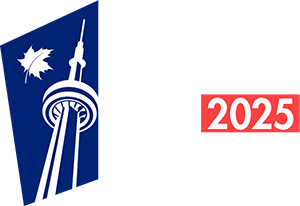Mobile Home Park Assessments
A mobile home park is defined as meeting the following criteria:
- Land on which one or more residential units are located.
- The owner of the property retains possession of the land.
- The owner of the dwelling leases the land from the property owner.
- Lease agreements and rental sites are governed by the Residential Tenancies Act, 2006 (RTA).
The RTA does not apply to sites that are short-term or seasonal, such as:
- resorts
- tourist camps
- campgrounds
- trailer parks that are seasonal/temporary only
How your mobile home park is assessed
MPAC assesses mobile home parks under one roll number, and the individual occupants are listed as tenants. Your mobile home park assessment will show the overall current value of the entire property.
While MPAC assesses each unit, it does not identify individual assessments for each unit on the notice. If you are the owner of a mobile home and require information about specific units, MPAC can supply it to you if you submit a written request through AboutMyProperty.
Mobile home parks are assessed using three different approaches to determine property value.
The income approach is used to value the mobile home sites and the common land area used with the sites associated with the mobile home park. MPAC uses the income approach to value income-producing properties that are bought with the intention of earning a return on investment in the form of rent, capital gain, or both.
The cost approach is used to value the units with reference to valid sales of units, when available, and any additional structures. MPAC uses the cost approach to derive a property’s value by estimating the cost to replace the functionality and utility of an improvement.
The direct comparison approach is used in the valuation of any land not associated with the mobile home park, such as the owner's private residence. MPAC uses the direct comparison approach to value land (in addition to other types of properties) across Ontario.
1. Valuation of the land: the income approach
In order to determine the earning potential of the sites in your mobile home park, MPAC analyzes:
- income
- expenses
- purchases and sales
- land, including mobile home sites and common areas
To do this analysis, MPAC requests specific data from mobile home park property owners each year:
- tenant names
- operating statements
- rental information
MPAC analyzes the income and expense information to determine the net operating income for the park. MPAC makes historical reference to the income and expense information collected in prior years to ensure the information being reported is typical of a normal year of operation.
MPAC determines the net operating income by deducting the fees and expenses listed below from the potential gross income:
- standard management fee
- standard vacancy and collection loss
- abnormal vacancies
- operating expenses, including:
- water services
- wages and management
- snow removal
- maintenance and repairs
- legal fees
MPAC then divides the net operating income estimate by an appropriate capitalization rate (cap rate) for that property.
The resulting value represents the value of land used by the units, as well as land and structures used as common areas, such as:
- roads
- pedestrian walkways
- recreational facilities
- laundry
- parking areas
2. Individual units and additional structures: the cost approach
MPAC applies the cost approach to value the mobile home units. In consultation with manufacturers in the mobile home industry, MPAC inspects mobile home parks periodically to ensure the data on file is up-to-date and accurate.
A mobile home is deemed to have a degree of permanency or intent to be permanent if one of the requirements below are met:
- The mobile home has a minimum width of 8 feet, 6 inches; or
- The mobile home, if smaller than 8 feet, 6 inches wide, has an enclosed structure attached to it, such as
- sunroom
- enclosed porch
- garage
As further indicators that the mobile home is permanent in nature and therefore assessable, MPAC gathers and reviews the following information:
- The presence of an attached structure such as a carport or deck.
- Permanent connections for services such as water, electrical and waste disposal.
- The tongue and/or under carriage have been removed.
- The unit has been placed on a supporting foundation.
When MPAC inspects a mobile home unit, the following key features are recorded:
- make and model of the unit
- size of the unit
- age of the unit
- condition of the unit
- type of additives such as decks, porches, additional rooms, etc.
- presence of air conditioning
Based on the above information, the structure value is determined by:
- Costing the unit to arrive at a Replacement Cost New (RCN), the estimated cost to construct a unit of similar design, material and functionality.
- Calculating Replacement Cost New Less Depreciation (RCNLD).
- Verifying that the RCNLD represents current value through market value data.
Structures used in managing the property are also valued using the cost approach. This includes:
- storage buildings
- residences for park employees
- commercial structures
3. Other land: the direct comparison approach
Excess land, which is land not used in conjunction with the operation of the mobile home park, is valued using rates developed through the sales comparison approach.
Current Value
The land value, including excess land not used in the operation of the mobile home park, is added to the structure value(s) to arrive at a total current value.
Once the current value for the property has been established, the value is apportioned between the various uses occurring on the mobile home park. This process is referred to as partitioning.
Partitioning is done because different uses may dictate different property classifications.
Example:
- A mobile home park has a total current value of $500,000.
- There is a stand-alone store. The value of the store and appropriate land to operate the store is $100,000.
- The remainder of the value ($400,000) is attributable to the operation of the mobile home park.
- The mobile home park current value of $400,000 is therefore included in the residential property class.
- The stand-alone store current value of $100,000 is therefore included in the commercial property class.




